Last Updated on March 20, 2024 by Masha Eretnova
Do you wet the brush before using acrylic paint? Or do you use a dry brush?
Would you like to know how you should go about acrylic painting properly?
You don’t have to wet brush to start acrylic painting, but a wet brush makes a smoother stroke and uniform coverage. Do not soak acrylic paint brushes.
Usually, if I see that the paint doesn’t flow well, I quickly dip my paintbrush in water, and that’s enough.
But the amount of water depends on and is not necessary at all for some techniques.
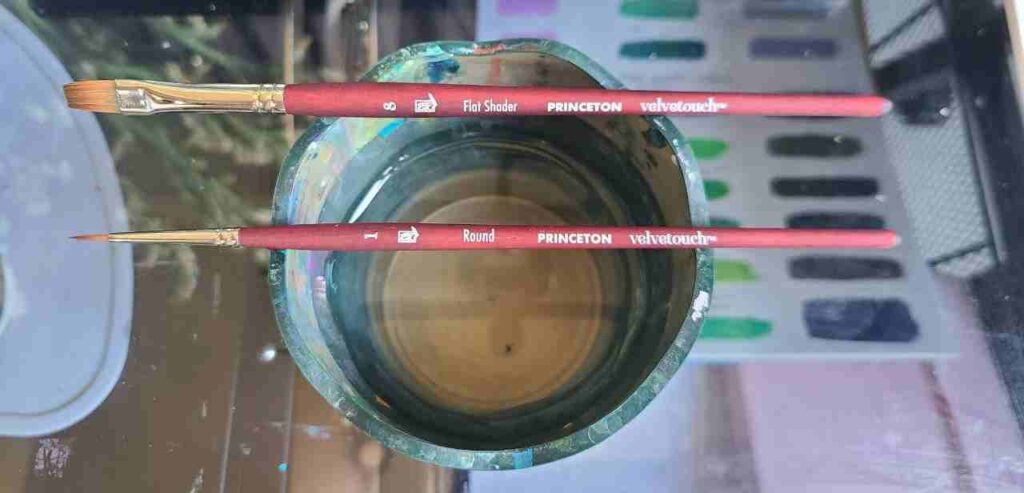
Table of Contents
This article contains affiliate links. It means no extra cost for you but a little commission (2-3%) for me to support my hobby and blog. Thank you!
To wet or not to wet?
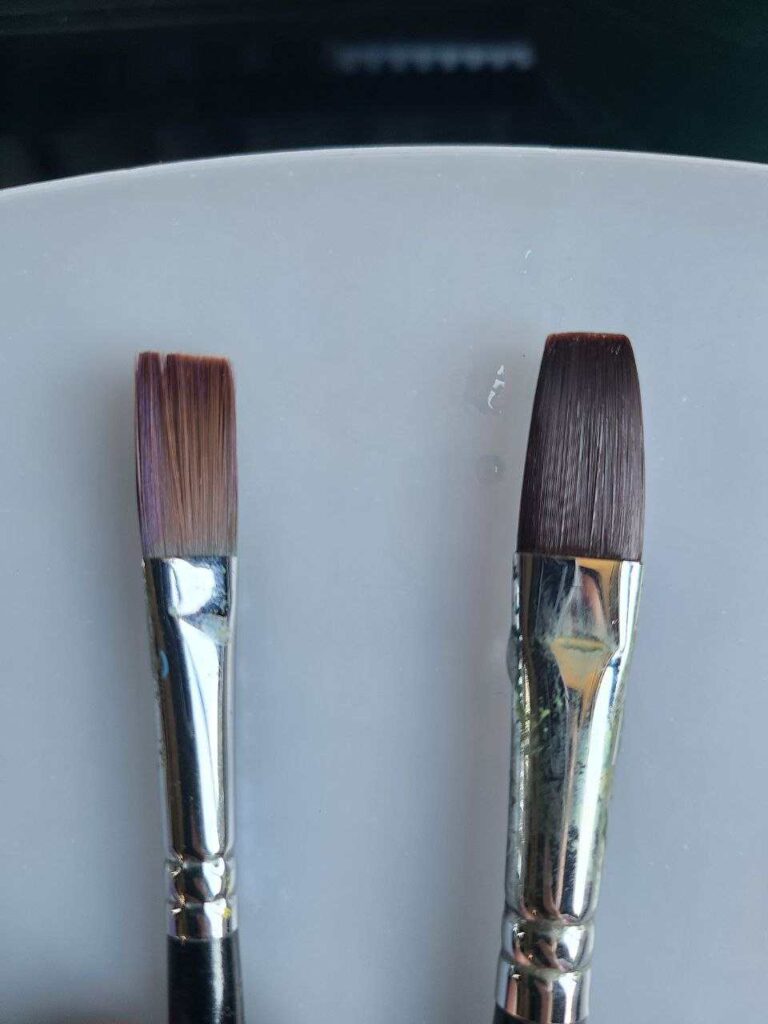
It is not mandatory to wet the brush for acrylic paint.
There are different acrylic painting techniques, some require a completely dry brush, but some call for a slightly or generously wet brush.
A good rule is to slightly wet the brush before painting with acrylics and dab off the excess water on the rim of the water jar or with a paper towel.
Do not paint with a brush if the water is dripping unless you want a watercolor-like acrylic wash.
Why do we use water with acrylic paint and brushes on canvas?
If we use professional heavy-body acrylic paint, it comes out of the tube pretty thick, and opaque and doesn’t flow freely on canvas.
We use water as a cheap and always accessible way to thin the paint and it helps the paint spread on paper or canvas.
The general rule is to add up to 30% water to acrylic paint for smooth application maintaining the opacity and color intensity. For glazing or washes, you can add 50% to 80% water to your paint.
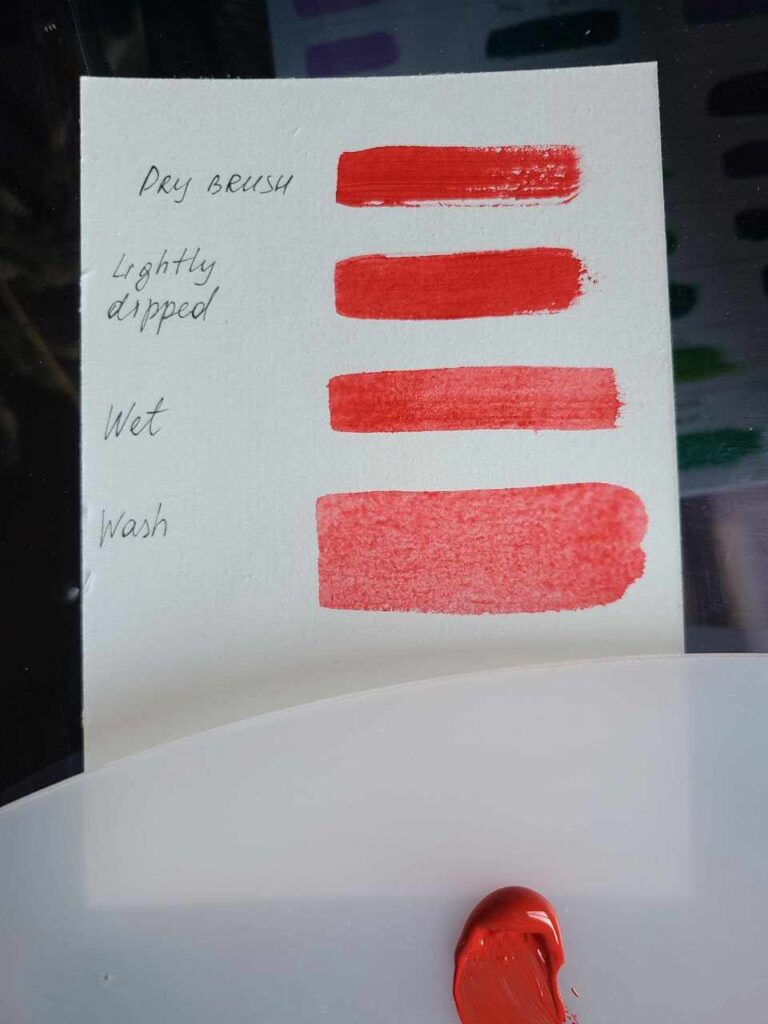
Please only add 80% water to very good acrylics. Water breaks down the pigment-binder connection and the cheap paint already has fewer and lower-quality pigments.
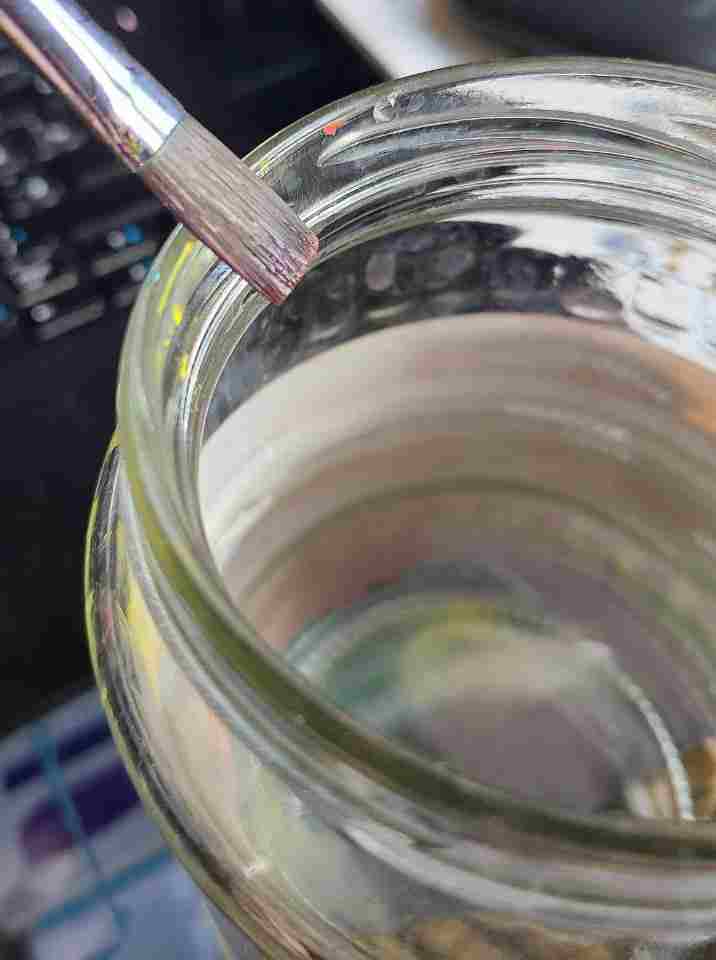
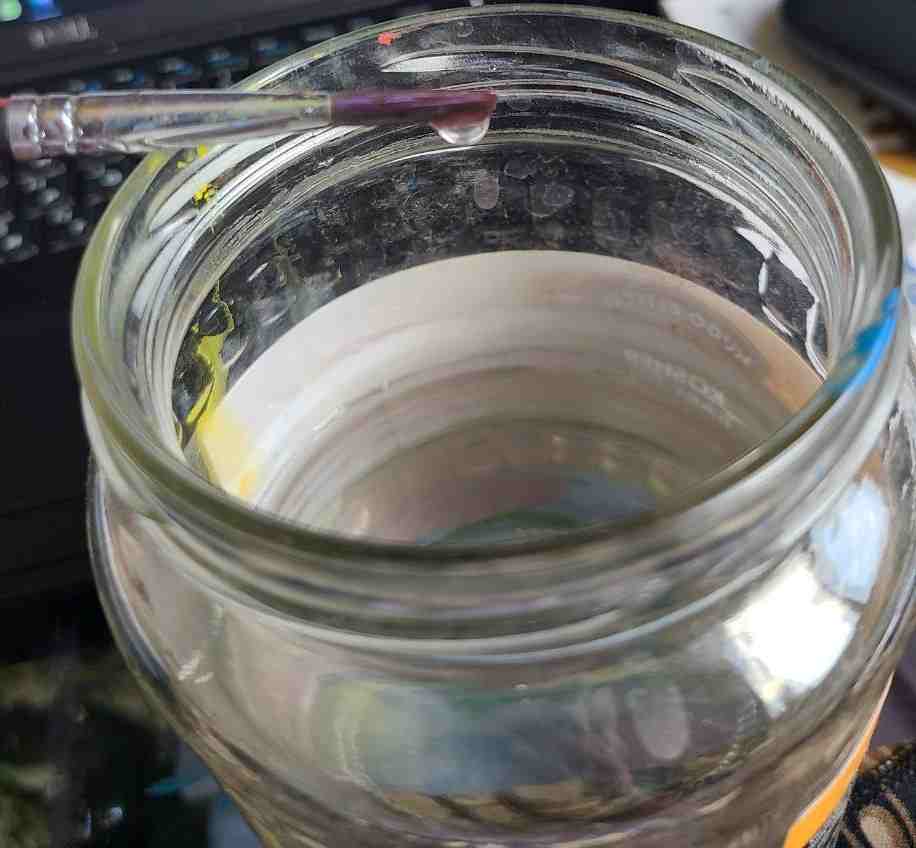
This brush is too wet as the water is dripping. You will get washes.
Cheap paint diluted too much can crack while drying or even peel off, or let the paint sticky.
If you doing a textured or impasto painting, it is great to use a dry brush.
But when you need to blend, cover a large area, or have even smooth brush strokes, you wet your brush a little bit.
We should also use a wet brush for:
- smoother application. Water or mediums give more control over acrylic paints.
- more economical use of paint – with a wet brush the same amount of paint goes longer
- for easier blending
- painting on canvas surface, especially raw canvas surface, as it is rough, and paint will not flow smoothly without water.
- undiluted paint dries faster, so we add water to slightly slow the drying
- to reduce the effort, as a dry brush doesn’t spread the paint easily.
- for interesting effects: dripping paint or drops of water over the wet paint creates patterns in your art.
However, I should say that while it is ok to use water with acrylic paint to smooth the application, the paint quality sake should use a flower improver or acrylic paint extender like GAC100.
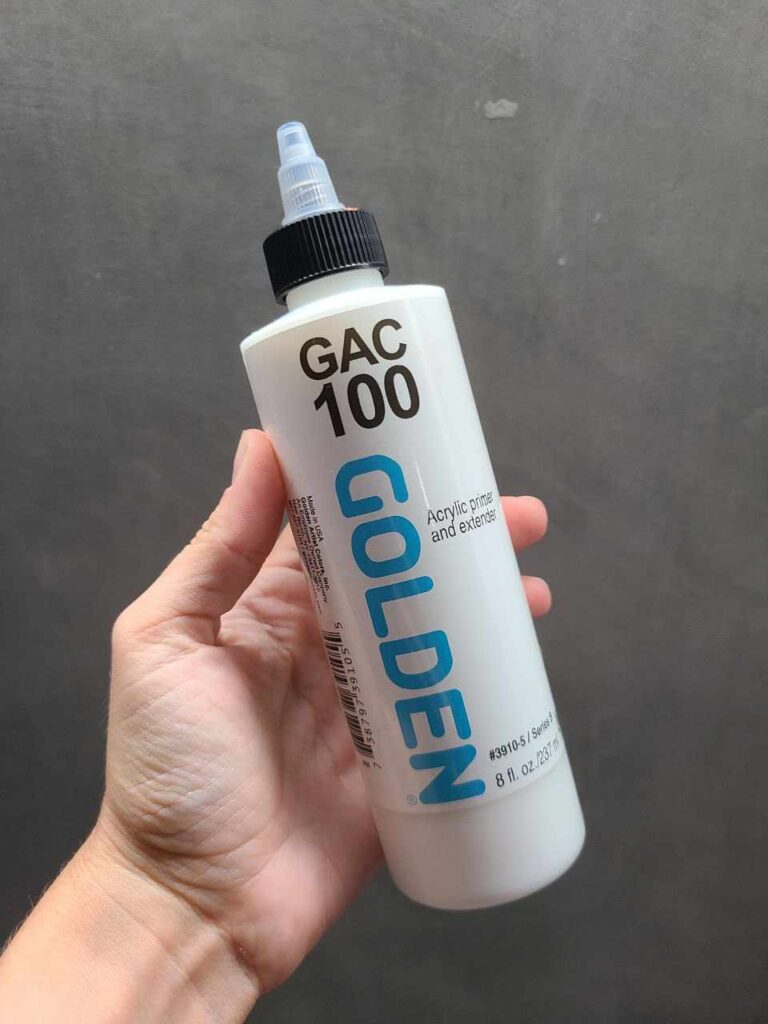
They allow you to increase the flow and coverage, and reduce the use of paint without sacrificing its composition or opacity. It is a more professional way to thin acrylics.
When we use water with acrylic paint, we usually have 2 jars – one for washing the colors off (for dirty water) and one with clean water to only wet the paintbrush.
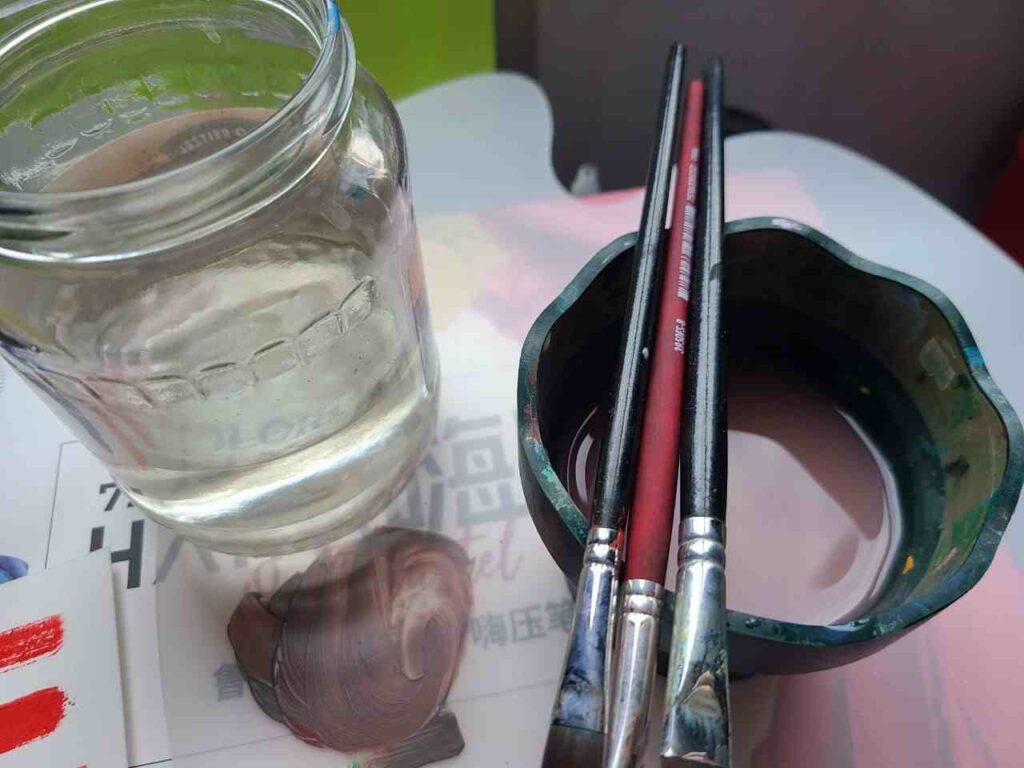
While it is ok to use regular mason jars, I really love my little Faber-Castell flip and go water cup.
It is very convenient to store paint brushes on top of it in brush holders which prevents the lazy habit of letting the brushes soak in water.
It also folds in and I take it with me traveling.
Read also: Why Is My Paint Watery? 15 Ways To Fix Runny Paint
When to keep the brush dry before painting?
We use a completely dry brush for acrylic painting only for dry brushing or dry brush blending.
For example, I use dry brushing a lot for my abstract expressive paintings as a part of my personal preference and style:
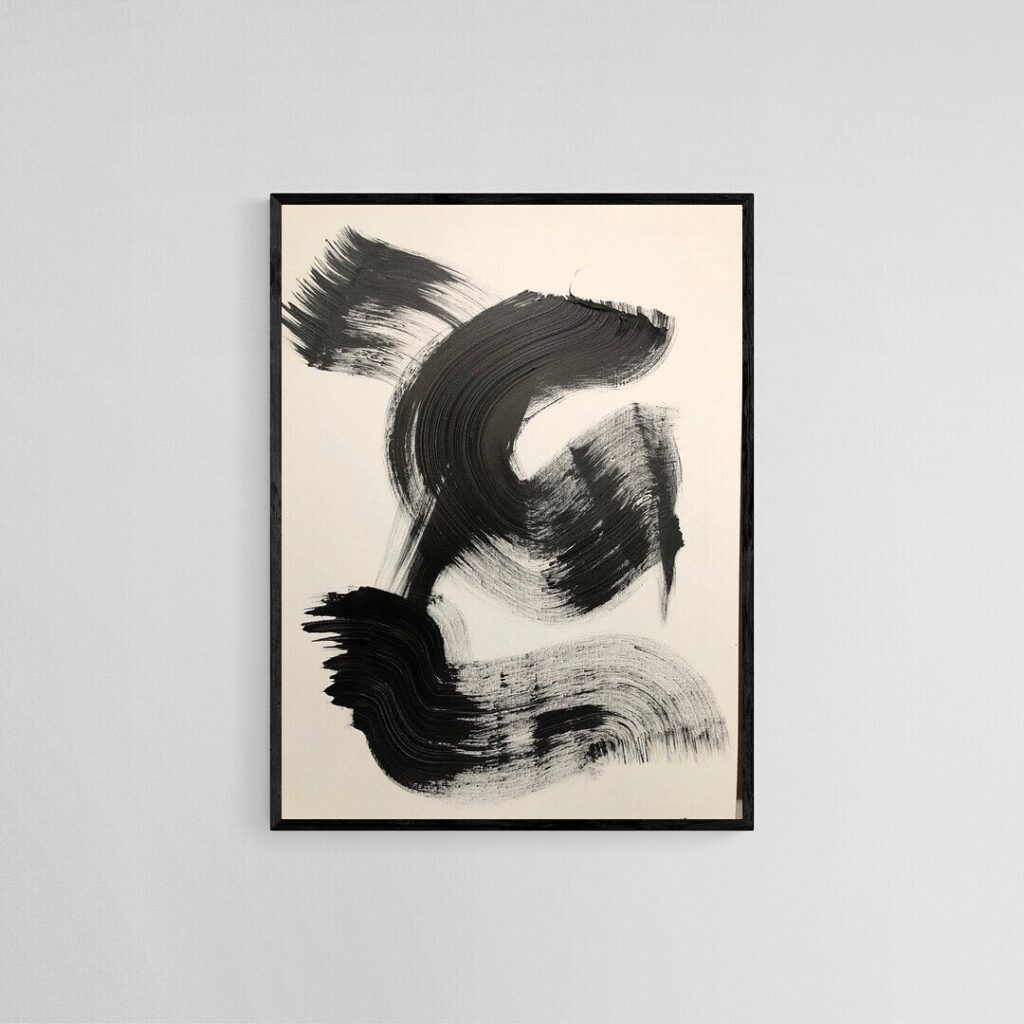
A dry brush makes an expressive but uneven stroke. It doesn’t cover well the surface but leaves texture.
A big advantage of using a dry brush is that this is how you get the most opaque and vibrant colors right out of the tube.
You will also use a dry brush for stumbling, adding highlights, and painting fur or details that don’t need even coverage.
Yet, as I said, you can use GAC100 and then you get a smoother application but the same color intensity. As a side-effect it makes acrylics dry a bit slower.
Otherwise, a wet brush is easier to paint with for beginners.
Note: excessive use of a dry brush or extreme rubbing will ultimately damage the paintbrush.
How do you prepare brushes for acrylic paint?
To make a successful acrylic painting we always start with preparation.
It not only includes gessoing the canvas or picking up colors, but also making sure the brushes are good to go.
Painters mostly use synthetic brushes for acrylics.
Most importantly, make sure you have all your brushes clean. Do not ever let acrylics dry on the brush.
It is a natural process for a brush to shed and, with time, it has to be replaced. So the physical check comes first:
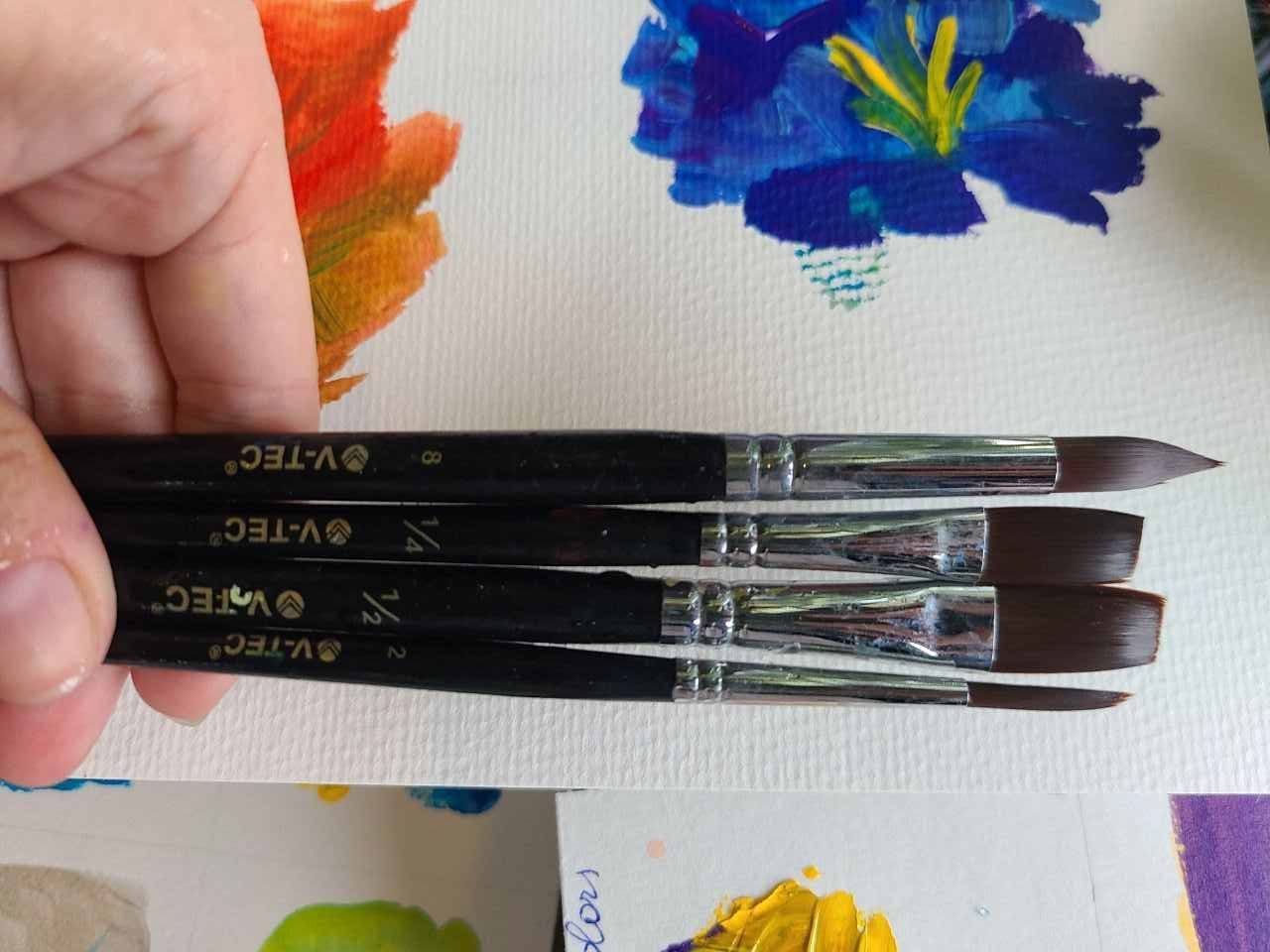
To check the brush before painting, make sure it still can keep its shape, is flexible when you bend it lightly, doesn’t shed much (with no reason) and the ferrule is tightly connected and not loose.
If the brushes are in mint condition, select the ones you are going to use for this painting.
If there are some loose bristles, remove them before painting.
Some new brushes may be covered in some solution and may seem stiff. Wash them with soap or brush conditioner first and let them dry.
I normally recommend having a go-to set for beginners consisting of 2 round brushes and 1 flat brush.
Finally, prepare 2 jars with water but do not put brushes into water.
Keep brushes on a rag or paper towel or just beside you, do not leave them in water.
Once you set up your palette and colors, you can dip the brush in a clean water jar, dab the excess paint onto the rim or the towel, and then dip it into paint from both sides.
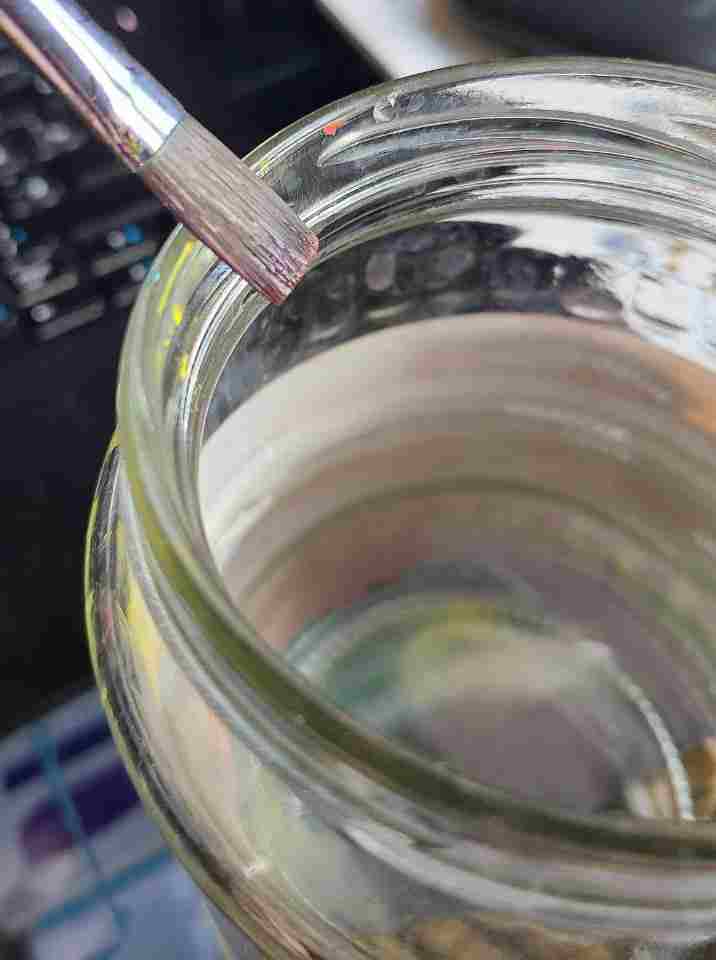
It is better to use shallow jars or not to fill them to the rim. We need to protect the wooden handle, especially if it has a lacquer finish.
With too much exposure to the water, the wood may get damaged or lacquer will peel off. Some ferrules can also rust.
You are good to begin painting 🙂
Do not forget to clean, dry, and store the brushes immediately after you finish painting.
How Do You Keep Acrylic Paint From Drying Out On The Brush?
Acrylic paint is very fast-drying – acrylic paint dries in about 5 to 30 min, and once it’s dry it sticks to brush synthetic bristles and you will need to scrub it off.
Which is not great for acrylic brushes.
To make sure the paint is not drying out and hardens on the brush, after using each color, wash your brush in your dirty-water jar, dab excess water until the water comes clean, and set the brush on the towel.
Another approach is to actually use an acrylic medium (slow drying, gloss medium, or GAC100) that will extend drying time and keep the paint wet.
FAQ
Do you dip acrylic brushes in water?
To make the paint flow and spread better dip 1/3, the tip of the brush in water tap, and then dip the wet brush in your paint. Make sure there is no dripping.
Can you leave acrylic paint brushes in water?
No, never leave acrylic paint brushes in water for an extended period of time.
Leaving acrylic paint brushes in water for too long can cause the bristles to become misshapen and can damage the ferrule (the metal part that holds the bristles).
If you want to clean your brushes, don’t soak them, just gently wash, reshape the bristles with your fingers and blot the brush with a clean towel.
Then, let the brush air dry completely before storing it.
Wrap Up
In a nutshell, wetting your brush before using acrylic paint can be a lifesaver when dealing with dry or thick paint.
It can also prevent your brush from turning into a paint popsicle.
However, it’s important to keep in mind that wetting the brush can also thin the paint and affect the color and opacity.
So, experiment with different techniques and find what works best for you.
And don’t forget to give your brushes a good cleaning after each use to keep them performing like champs.
Does wetting the brush help you paint better?

Masha Eretnova, born in 1991, is a Buenos Aires-based certified teacher, artist, and member of the Professional Artist Association with 20+ years of personal painting journey.
She started painting and drawing very early and is now an international abstract artist and educator passionate about acrylic painting, gouache, and crafts.
Her works are part of international exhibitions and contests, including ArtlyMix (Brazil), Al-Tiba 9 (Spain), Exhibizone (Canada), Italy, and many more.
Besides her artistic pursuits, Masha holds a post-grad diploma in Teaching Film Photography and 2 music school diplomas: piano and opera singing.
